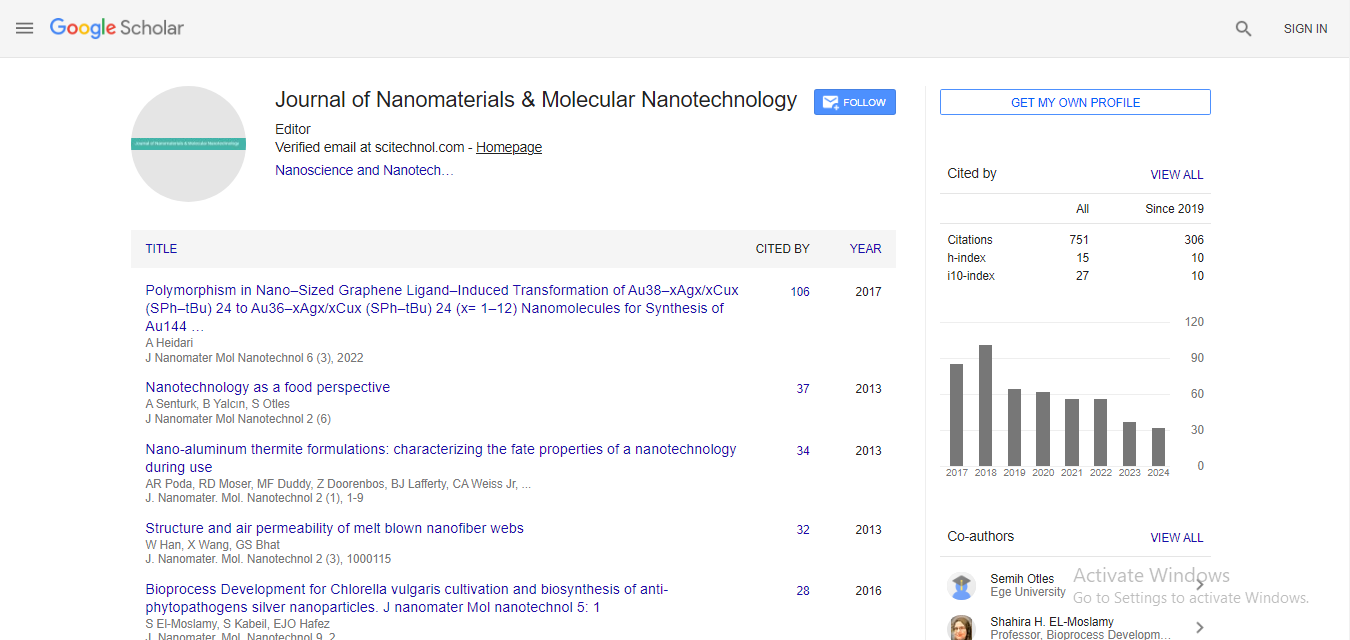Hydrophobicity imparted from self-assembled stearic acid molecules on Tio2 nano-structures formed on textile surfaces through ultraviolet irradiation
C A Thennakoon, R B S D Rajapakshe, W M Somasiri, R M G Rajapakse and R G S C Rajapakse
University of Peradeniya, Sri Lanka
University of Peradeniya, Sri Lanka
University of Peradeniya, Sri Lanka
: J Nanomater Mol Nanotechnol
Abstract
In recent years, hydrophobic layers formed on various surfaces have attracted a great deal of scientific and commercial attention due to their self-cleaning property with high water-repellent ability. TiO2 nanostructures, particularly, vertically-aligned 1-D nanomaterials (nanotubes, nanowires, nanorods, etc.) with selfassembled long chain fatty acids such as stearic acid are commonly used to impart these properties on surfaces such as glass, shoes, textiles, gloves, and so on. Herein, we report a simple method to increase the hydrophobicity by increasing the number of self-assembled stearic acid molecules around TiO2 nanoparticles. TiO2 nanomaterials were formed on textile surfaces by dip-coating from a TiO2 nanoparticulate dispersion formed from steam-assisted reaction of titanium isopropoxide. The treated fabrics were then exposed to UV light (λ = 256 nm) for different times varying from 0 to 40 minutes and dried at 120 ˚C for 10 minutes. The U- irradiated, TiO2-treated fabrics were then dipped in a solution of stearic acid at 30 ˚C for 1 hr, and dried at 50 ˚C. Hydrophobicity of the textile surfaces were evaluated by measuring contact angles and roll off angles of each sample. Crystal structure of TiO2 was characterized by X-ray deffractometry (XRD), surface morphologies by scanning electron microscope (SEM). According to the XRD data, TiO2 is composed of anatase form. Contact angles increased in the order 140˚, 146˚, 151˚, 154˚ and 161˚ with increased time of UV irradiation.
Biography
E-mail: charith.pdn@gmail.com
 Spanish
Spanish  Chinese
Chinese  Russian
Russian  German
German  French
French  Japanese
Japanese  Portuguese
Portuguese  Hindi
Hindi 



